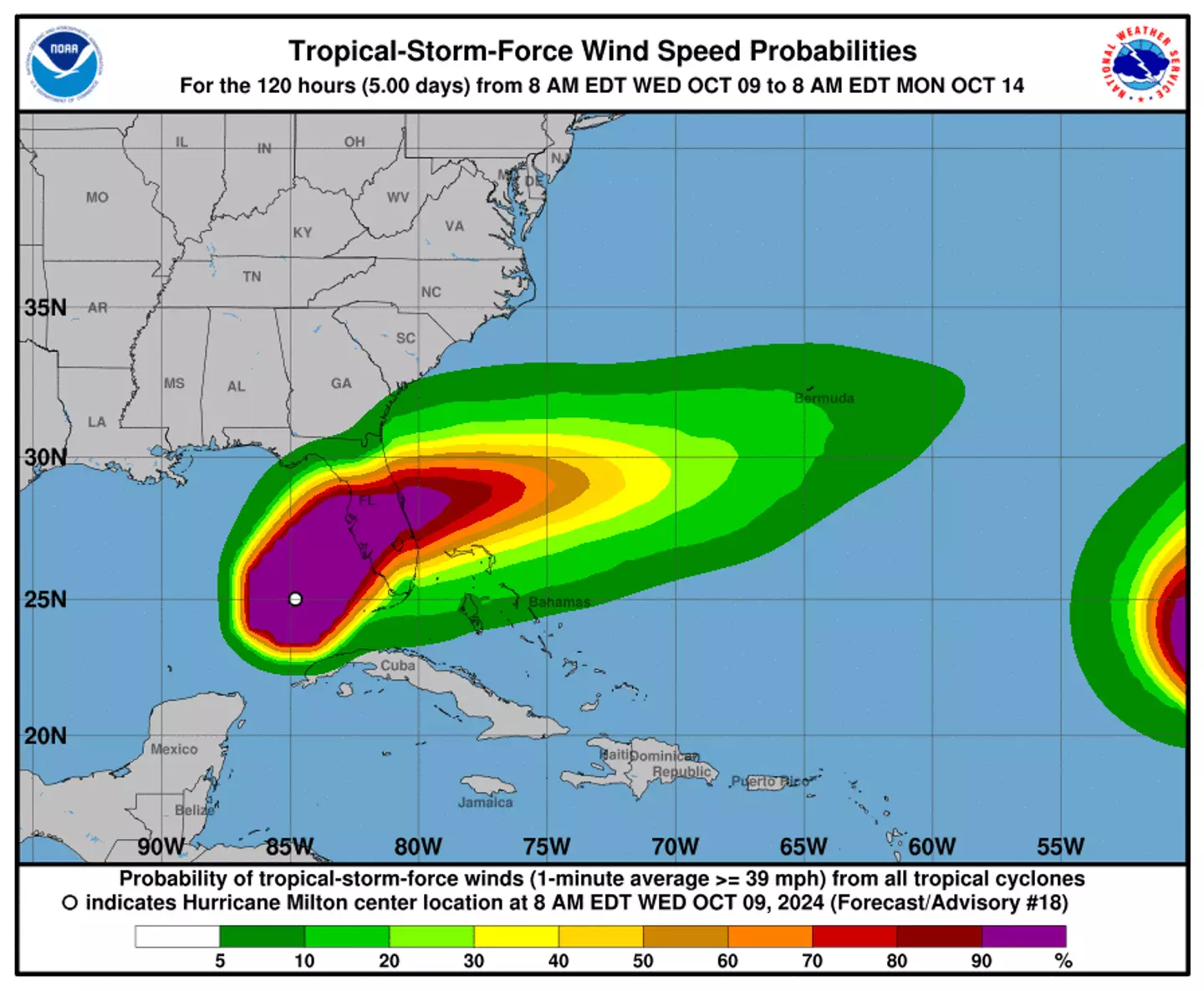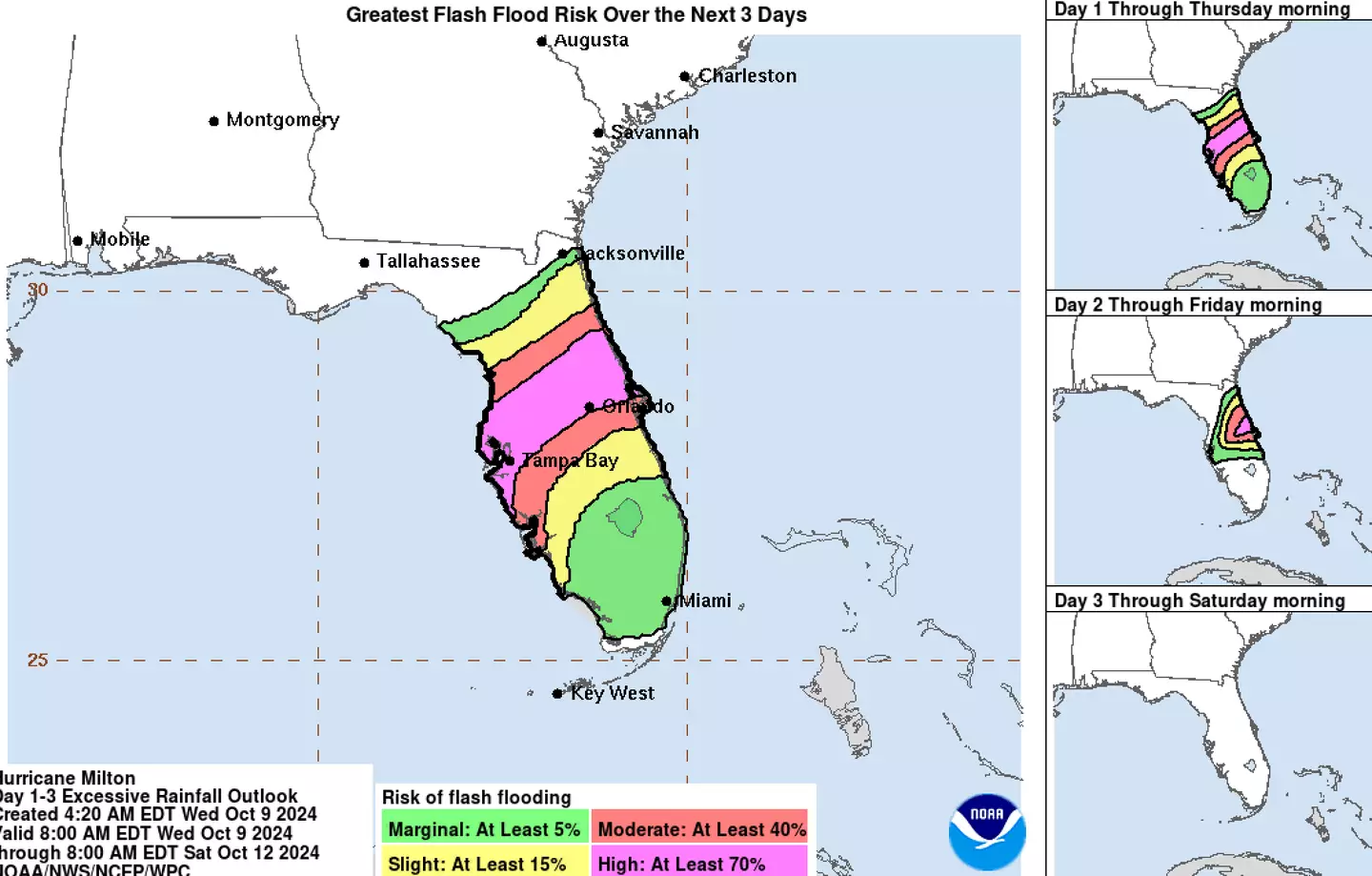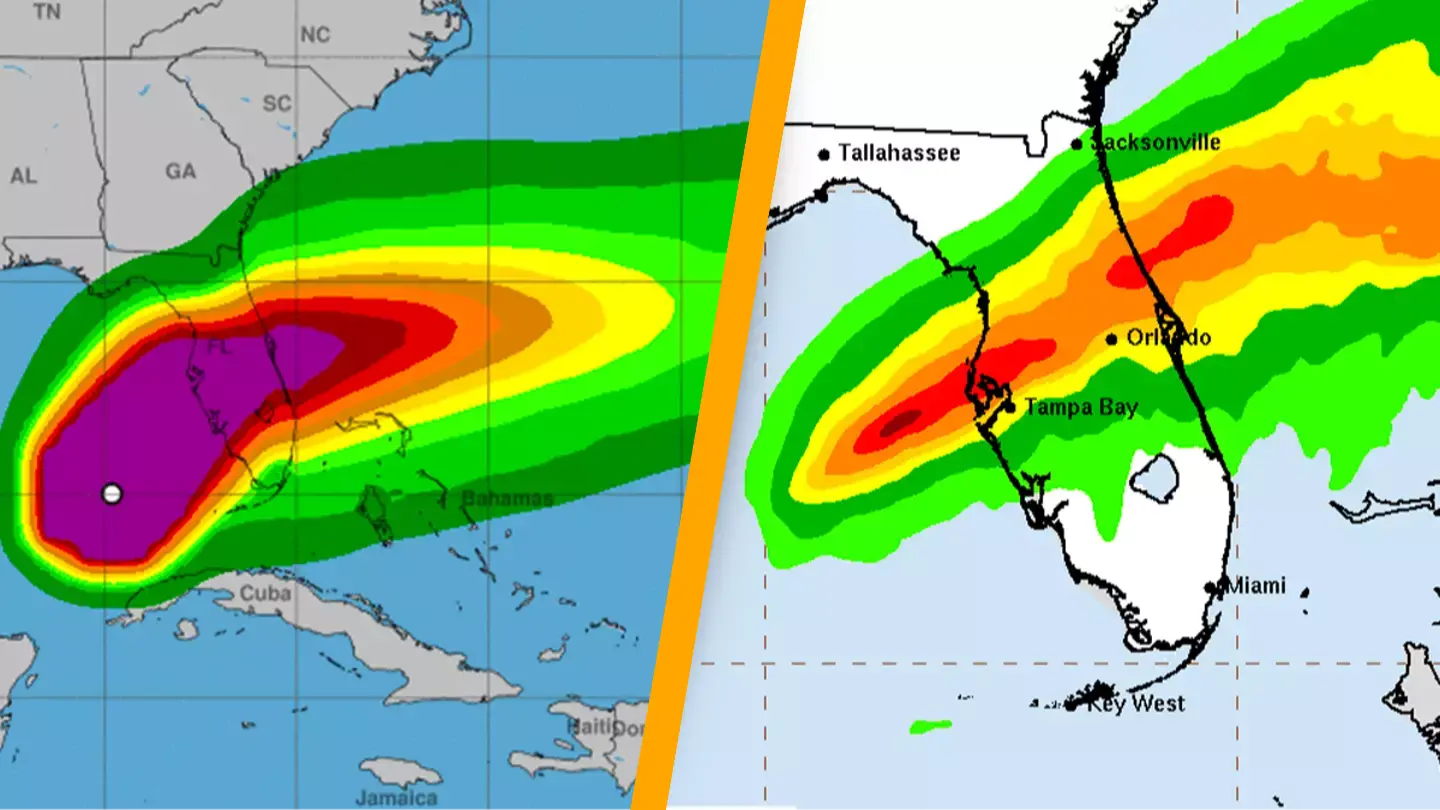Although it remains uncertain where Hurricane Milton will make landfall, a minor shift in its path could spell disaster for the Tampa area.
Milton intensified to a Category 4 hurricane on Wednesday and is currently heading towards the Florida Peninsula, with landfall predicted to occur overnight.
The National Hurricane Center has labeled Milton as ‘extremely life-threatening’ and has cautioned that its most severe effects are likely to impact the Tampa Bay Area.
With a population of about three-and-a-half million, the Tampa Bay Area is the metropolitan area most at risk from storm surges. Forecasts suggest that Milton could push 8 to 12 feet of seawater onto the land based on its present trajectory.
The exact extent of the storm surges will depend on Milton’s point of impact. According to USA Today, if Milton strikes south of Tampa Bay, a ‘reverse’ storm surge might drain the bay. Conversely, if it strikes 10 to 20 miles north, the area could be inundated by the surge.
Rick Davis, a meteorologist with the National Weather Service in Tampa Bay, mentioned to USA Today that predicting Milton’s path is challenging, with a margin of error of approximately 25 miles existing even 12 hours prior to landfall, which could significantly alter the outcome.

“That is going to be a big difference on storm surge conditions in the Tampa Bay area,” Davis explained. “If it just moves another 10 or 20 miles, then all that surge will be materialized in Tampa Bay.”
Davis further explained that the winds propelling Milton are heavily affected by fluctuations in the jet stream, noting, “Any little ripple in the jet stream can push the storm in one direction or lift it in another direction. So it’s very chaotic.”
The National Hurricane Center advised people ‘not to focus on the exact landfall point’ earlier today. They highlighted that ‘Milton’s exact landfall location is not possible to predict even at this time, particularly if the hurricane wobbles during the day and into this evening.’

Weather prediction is inherently difficult, and this complexity is amplified with hurricanes. The anticipated landfall location for Milton has shifted north and south repeatedly over the past 24 hours and is expected to continue fluctuating.
“It’s weather. It’s chaos. There’s inherently uncertainty in the weather,” Davis noted.
Although the precise landfall point and the severity of Milton’s storm surges are still uncertain, the National Hurricane Center states: “The risk of devastating storm surge still exists across much of the west-central and southwest coast of Florida given the size of the storm and the uncertainties in exactly where landfall will occur.”
To support the American Red Cross, which provides food, supplies, shelter, and emotional assistance to crisis victims, you can donate here.

